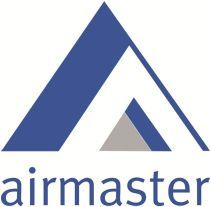Title Page
-
Document No.
-
Client / Site
-
Conducted on
-
Prepared by
-
Location
-
Logo
-
Damper Type
- Mechanical Fire Damper
- Intumescent
-
Damper No
-
Airmaster Barcode (if applicable) Hint: Tap on paperclip to scan
-
Floor
-
Area Located (Location)
-
Date last Inspected
-
Condition Rating
-
MECHANICAL FIRE DAMPER ONLY - Is the fire damper is in place, open and free from obstruction?
-
MECHANICAL FIRE DAMPER ONLY - Is the fire damper fully open and blades free to move?
-
Photo of damper - intumescent or Mechanical damper in open position
-
MECHANICAL FIRE DAMPER ONLY - Remove or release the fusible link to ensure closure and latching
-
Photo of damper closed
-
Fusible Link fitted; State Temp rating in Deg C (Temp or unknown)
-
Is the fire damper is in place, free from obstruction and is capable of operation. example: Damper fully within wall; Casing square & true
-
Is there any corrosion on the fire damper including casing, retaining flanges and fusible links? (The extent of corrosion shall not impede damper operation or prevent it remaining in place until the next inspection (5 Years)
-
Are there any signs of tampering or modifications? Report any suspected installation issues
-
Photo of any suspected installation / tampering issues
-
Are there any issues with the integrity of the surrounding structure within the immediate proximity of the fire damper. example - Hole in wall near the damper or a gap in the fire wall above the damper. Any issues identified?
-
Photo of integrity issue if identified
-
Do the flanges & duct appear to be attached and installed correctly?
-
Does packing appear to be installed around casing?
-
Does the Wall & Penetration appear to be formed correctly
-
Is the damper orientation correct and airflow direction correct?
-
Comments







